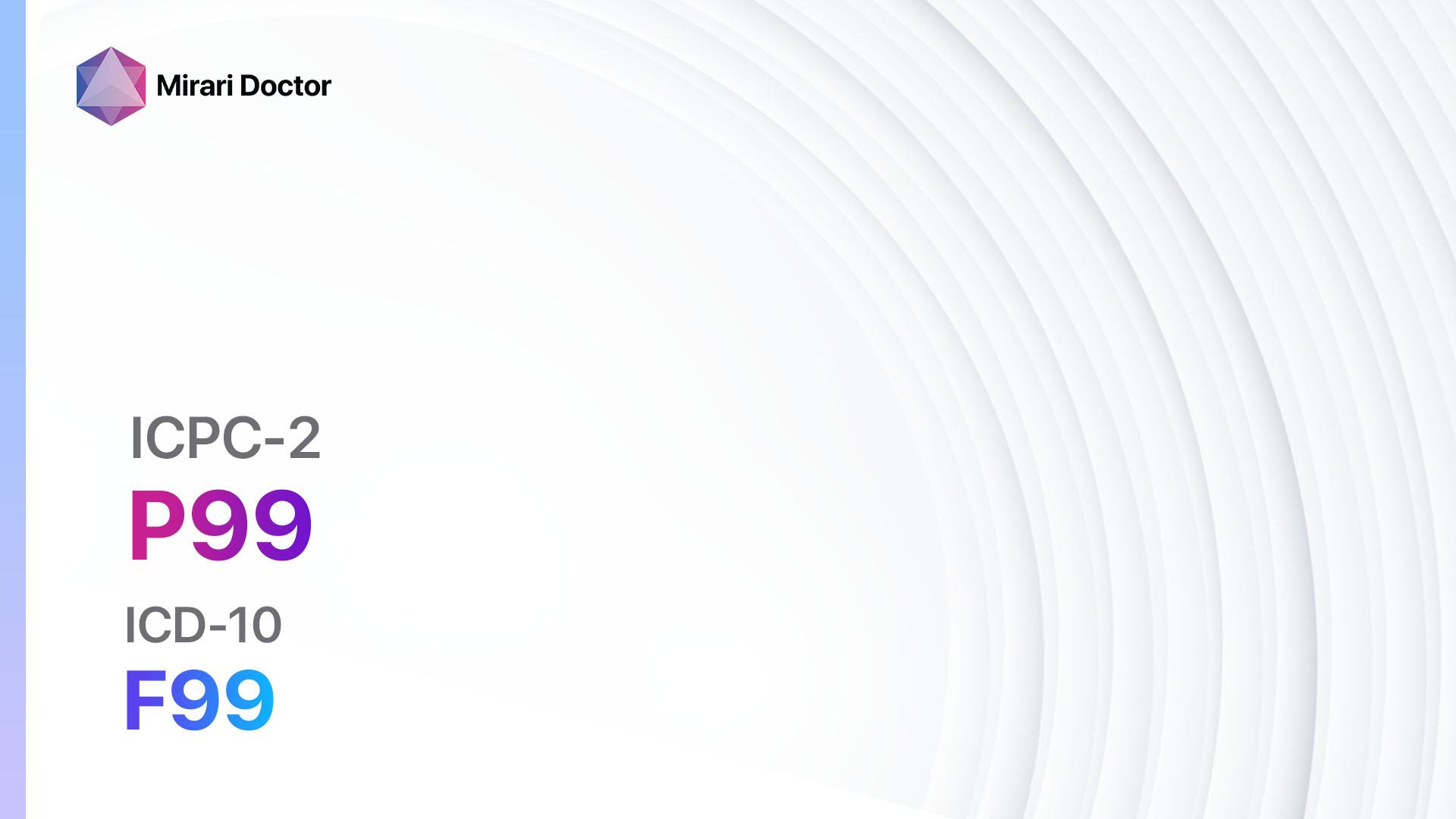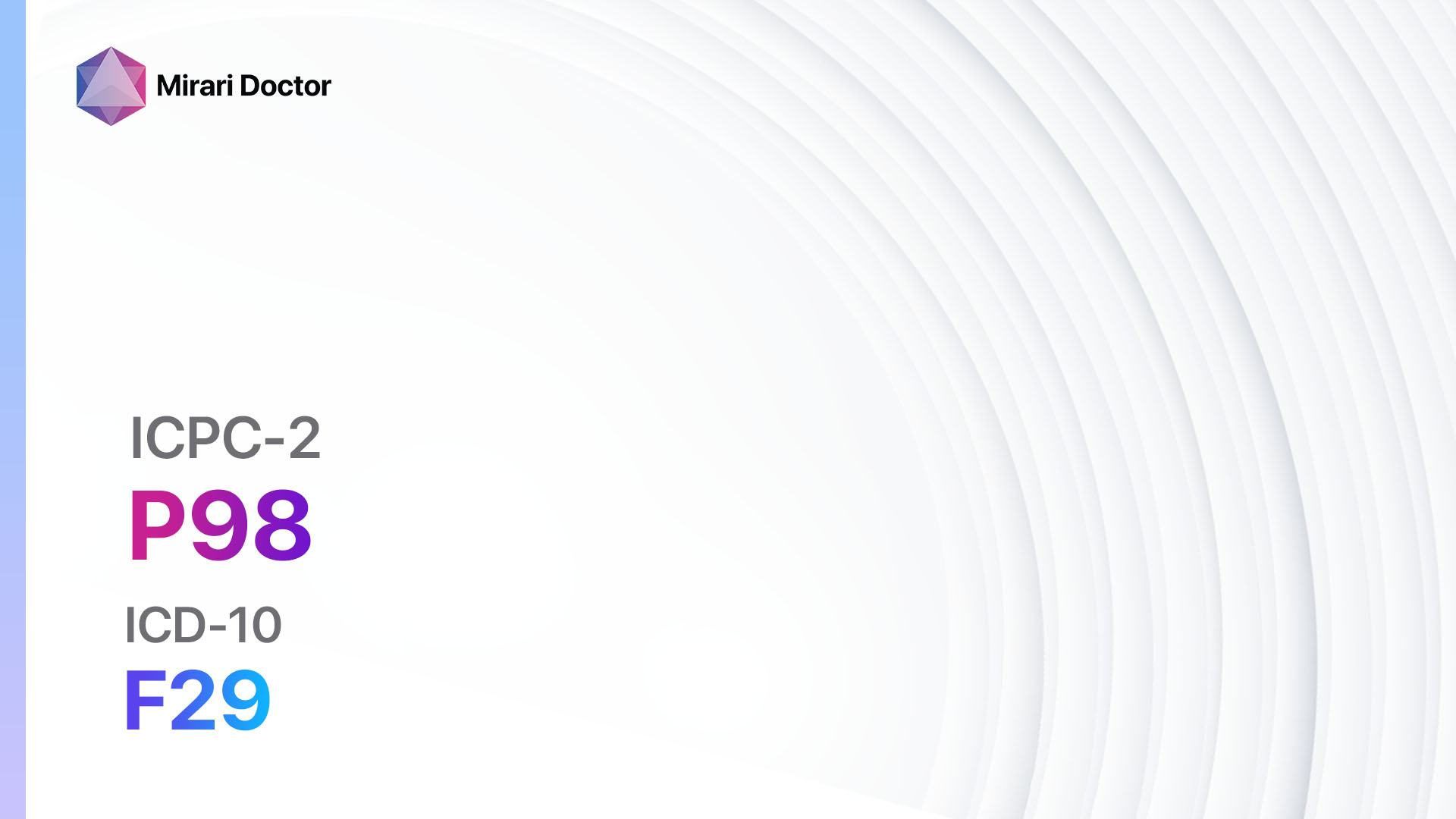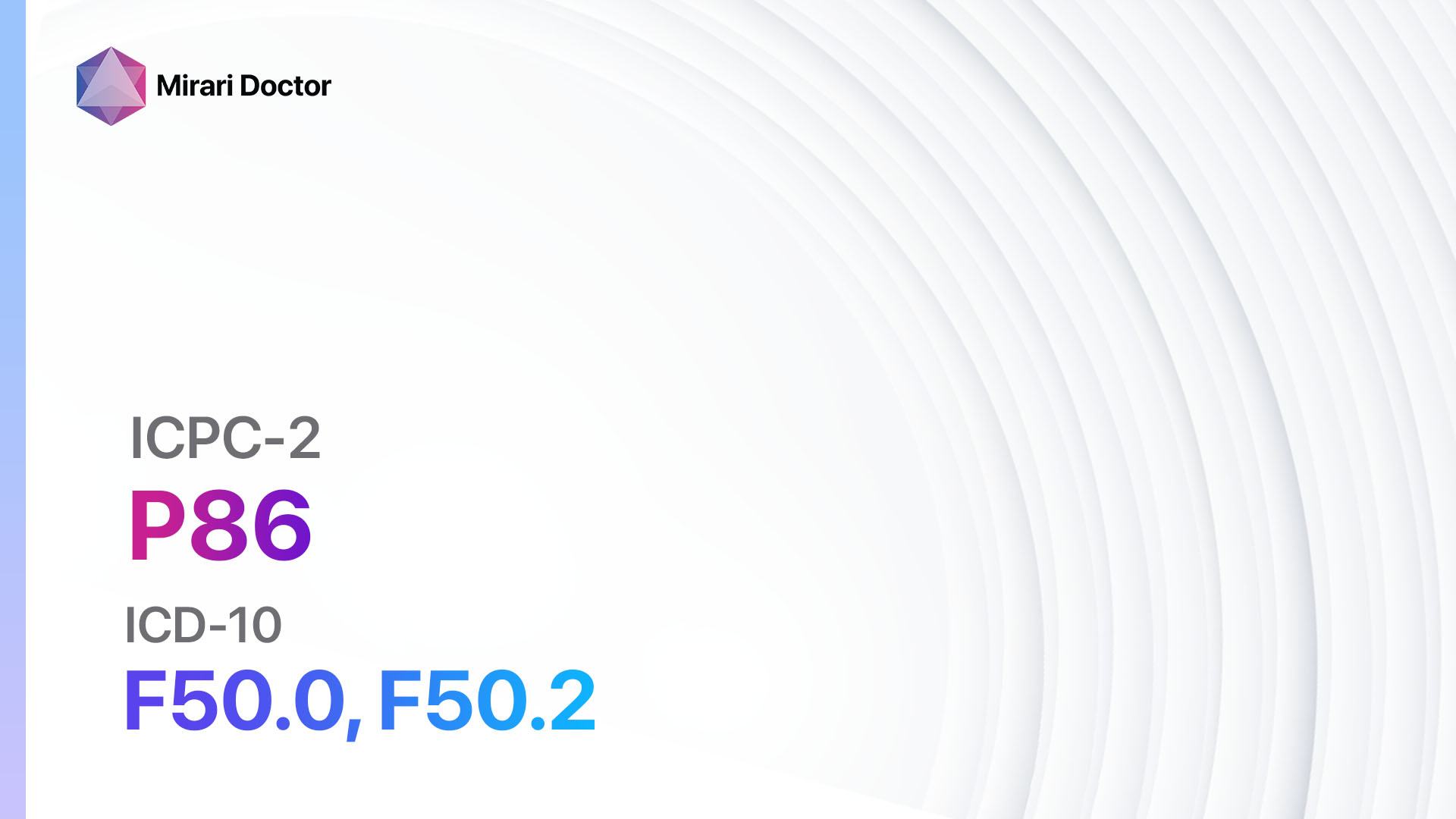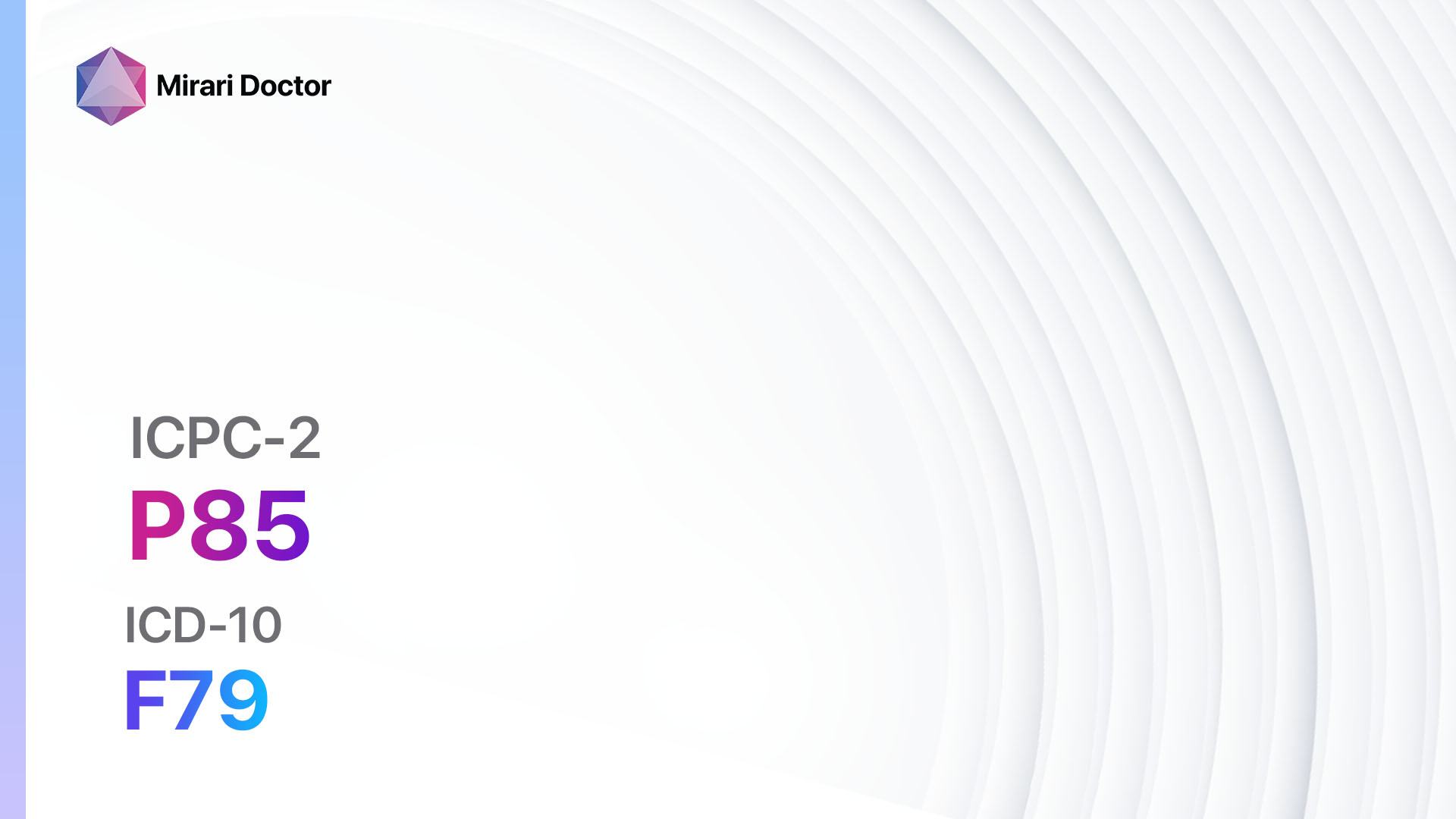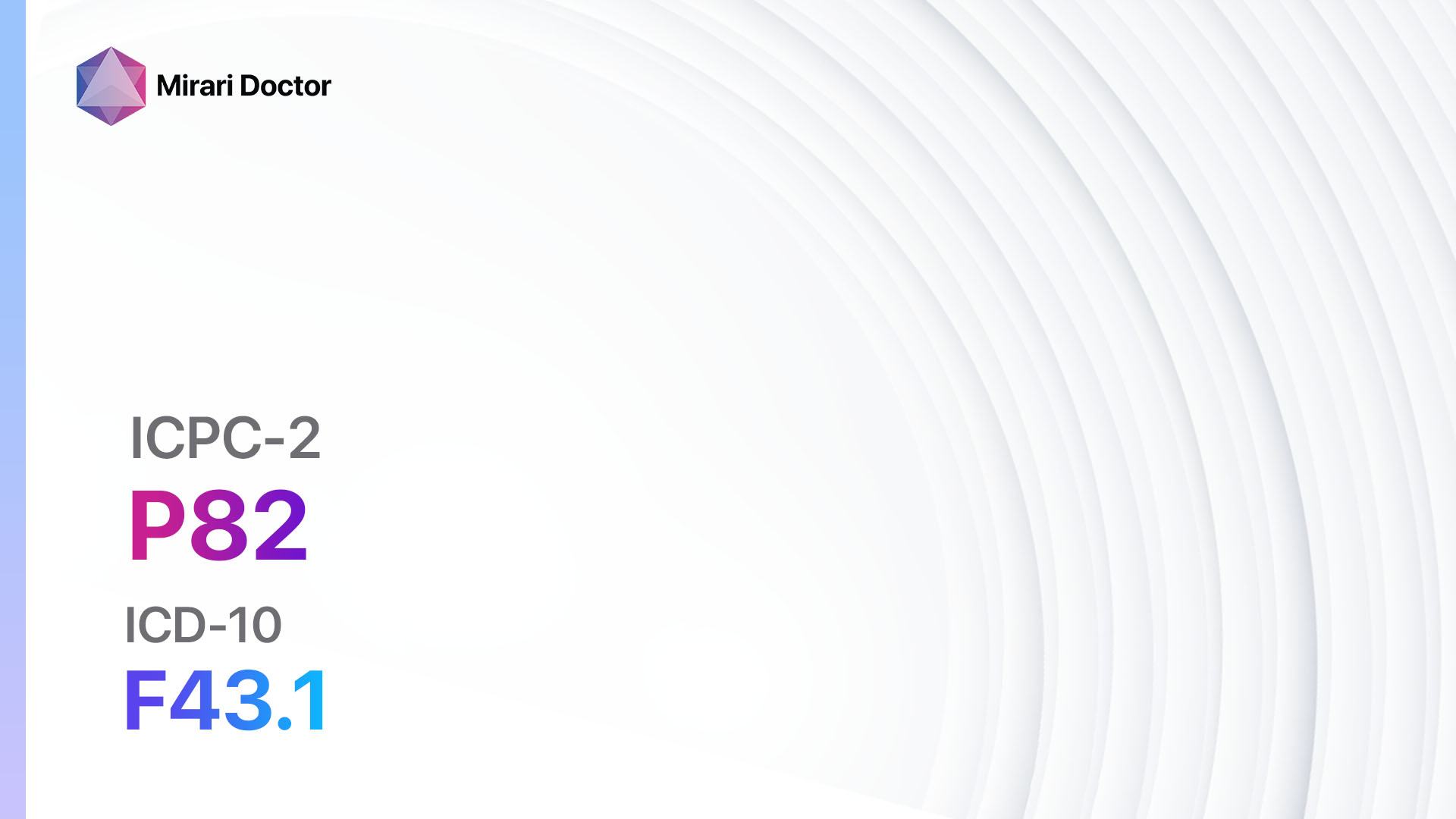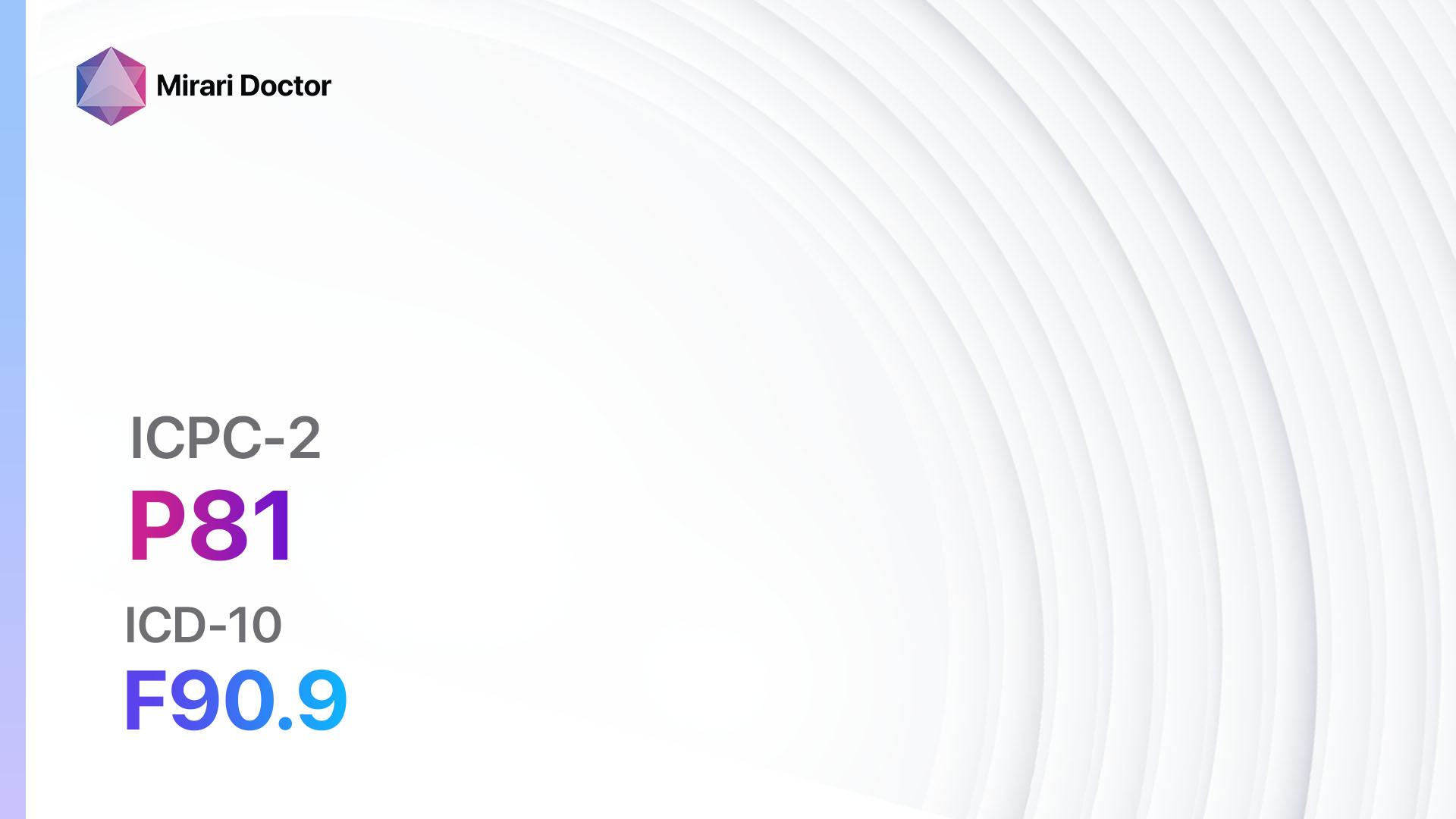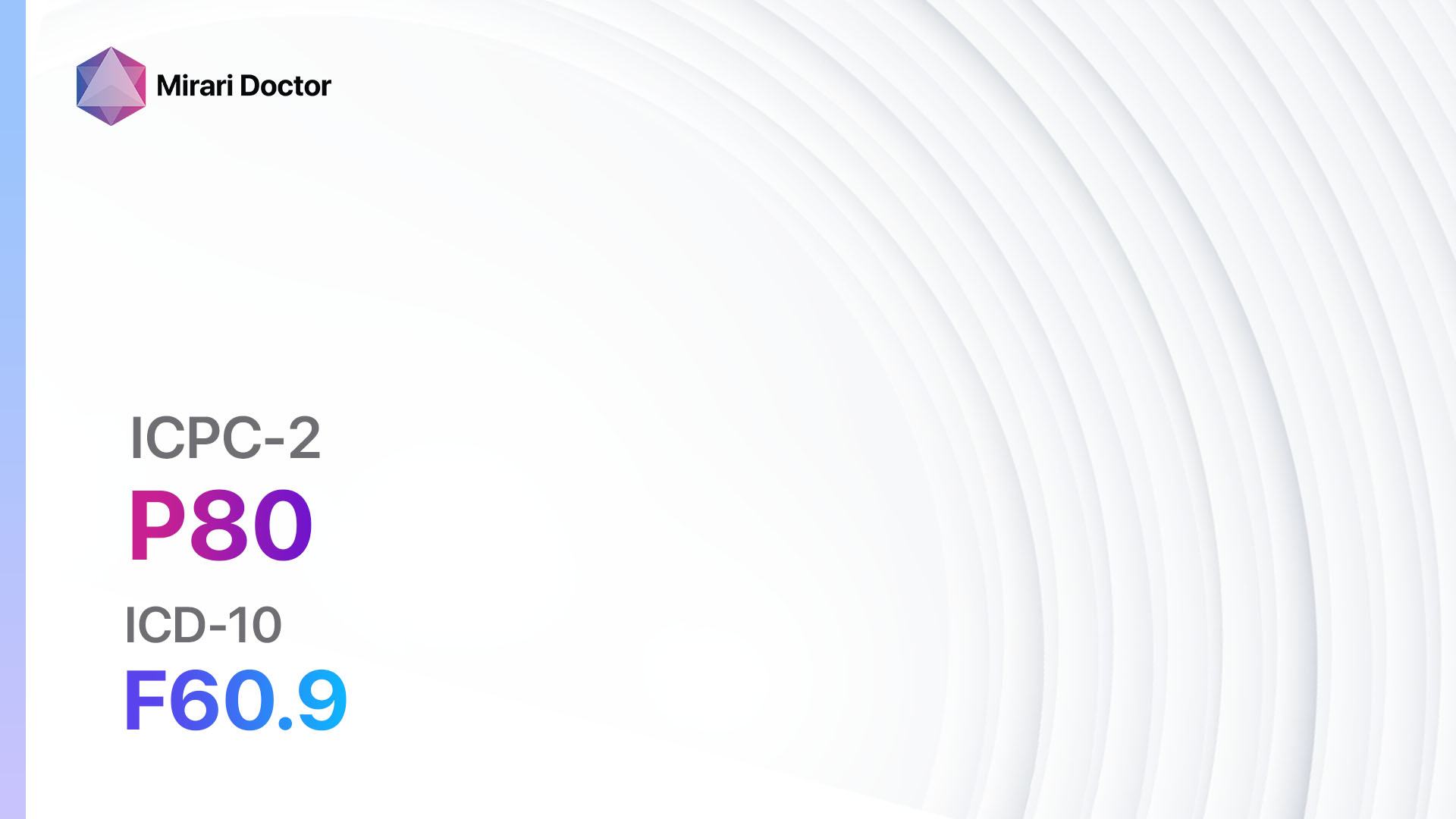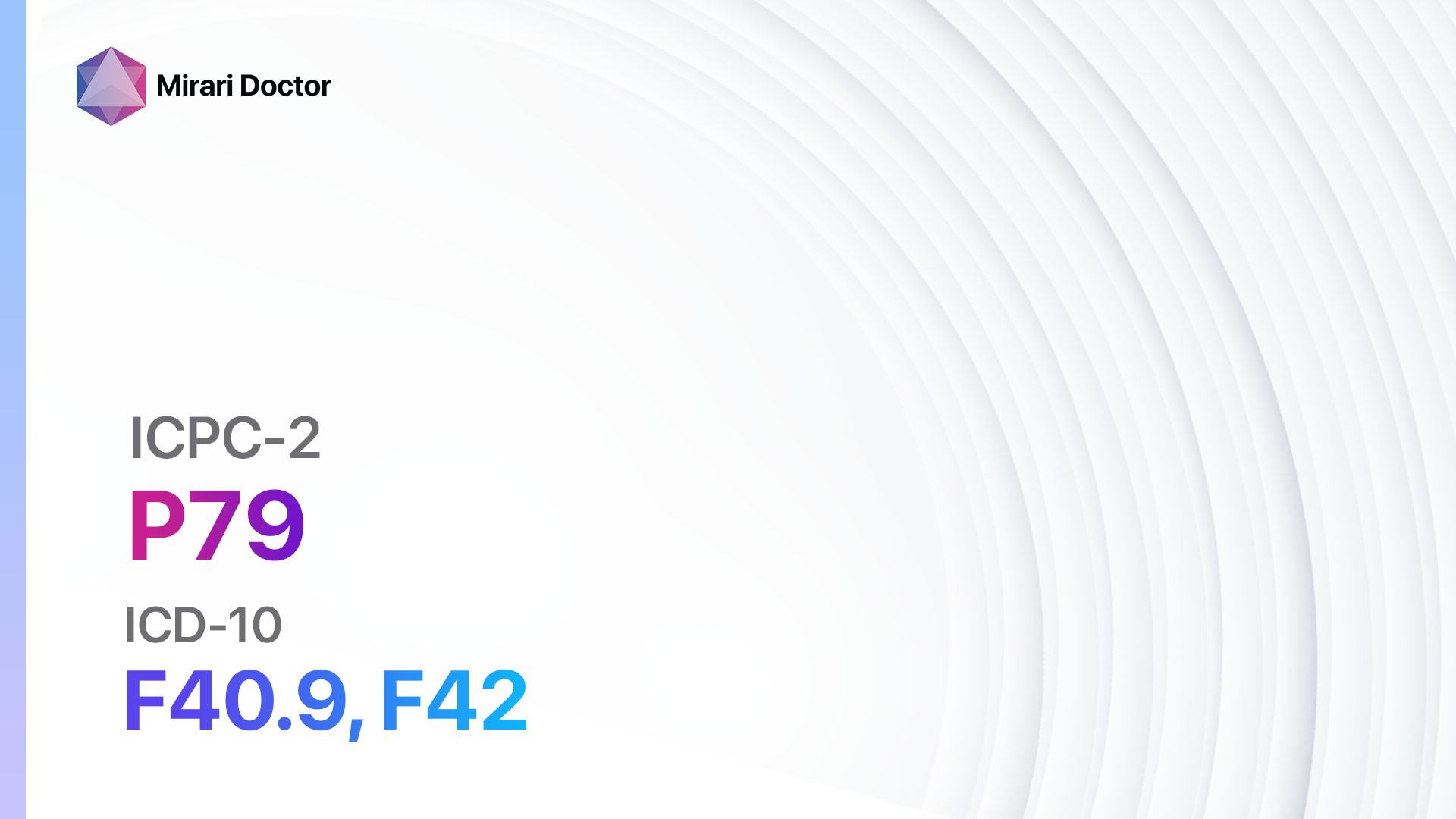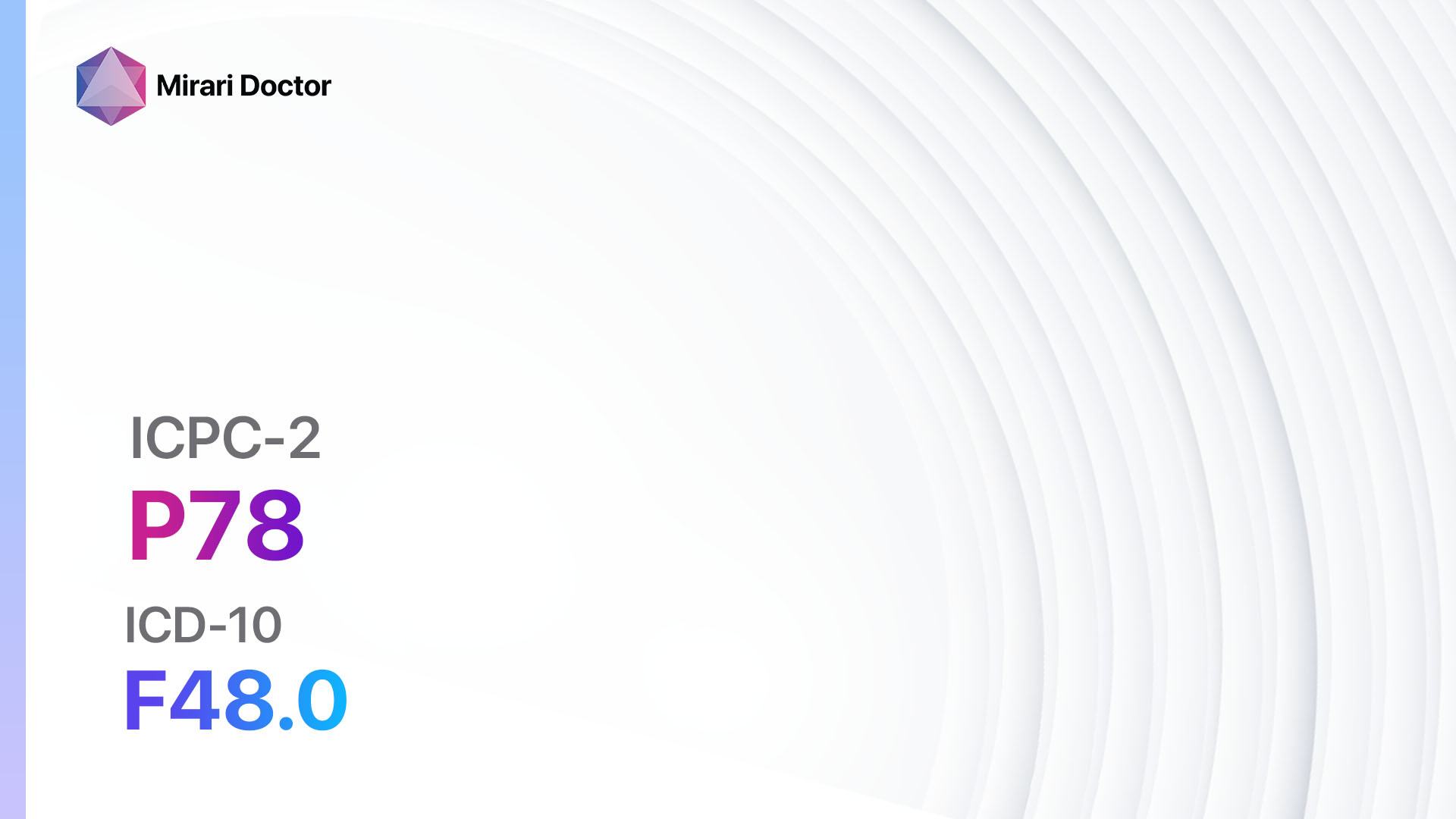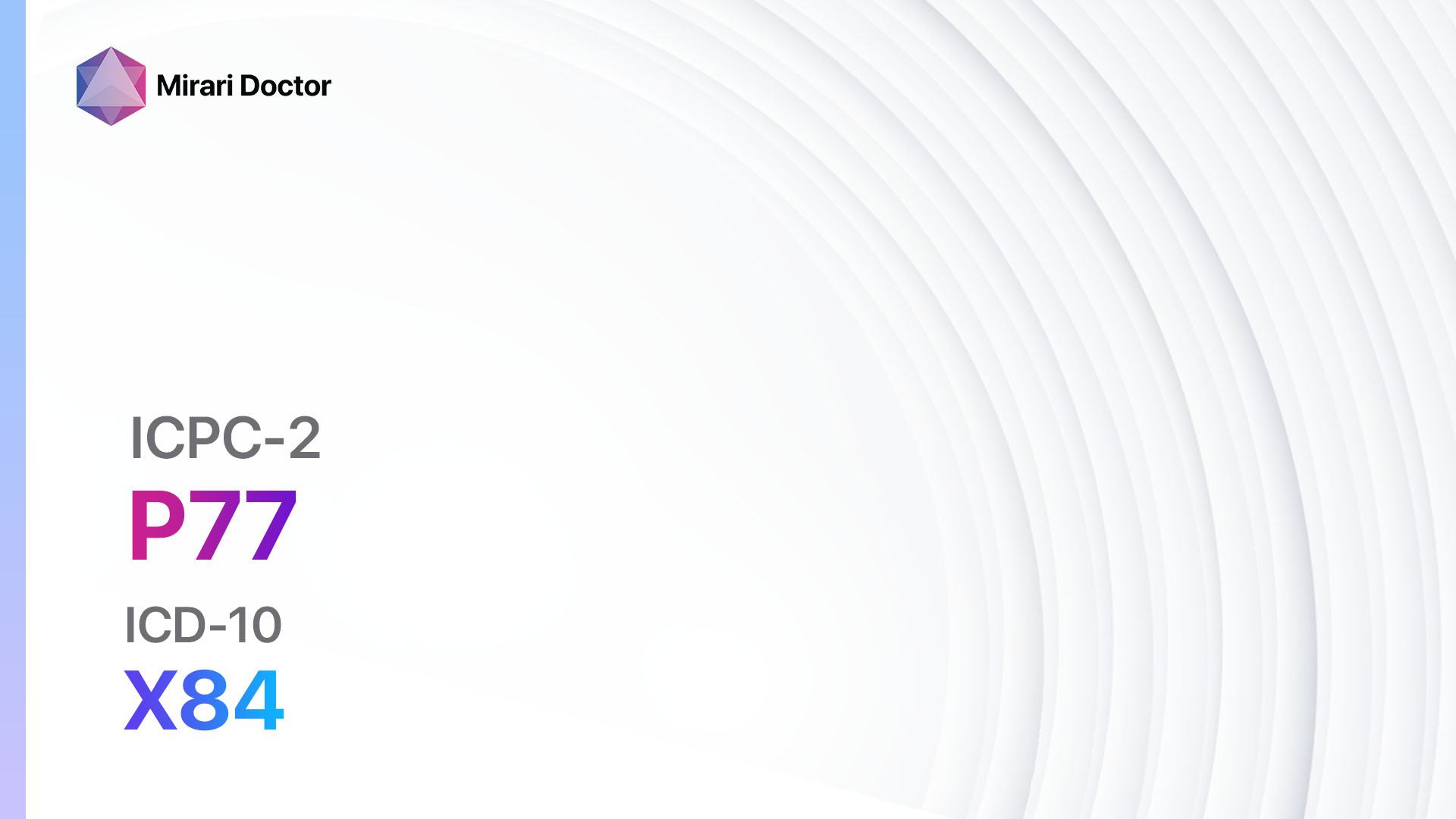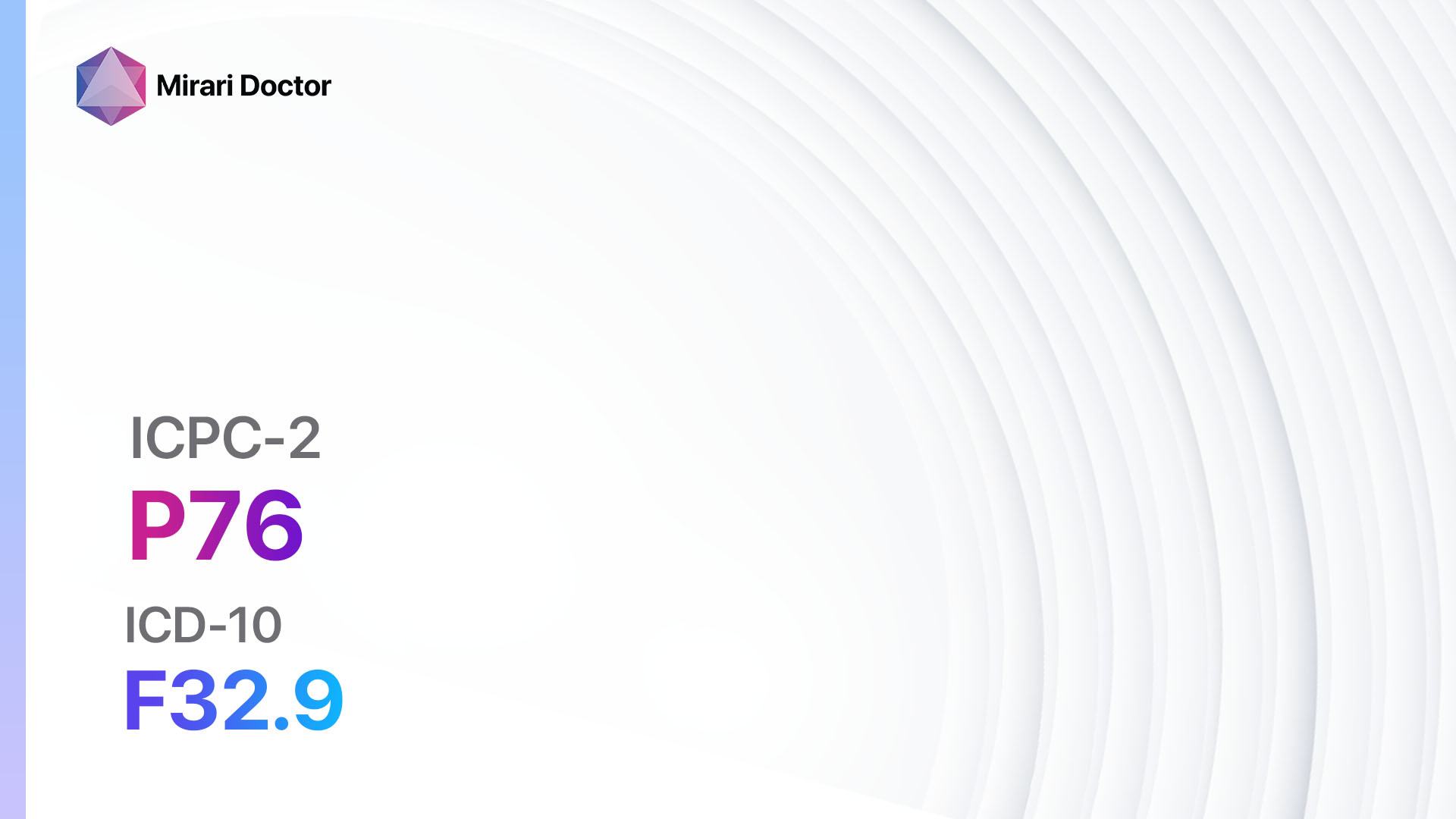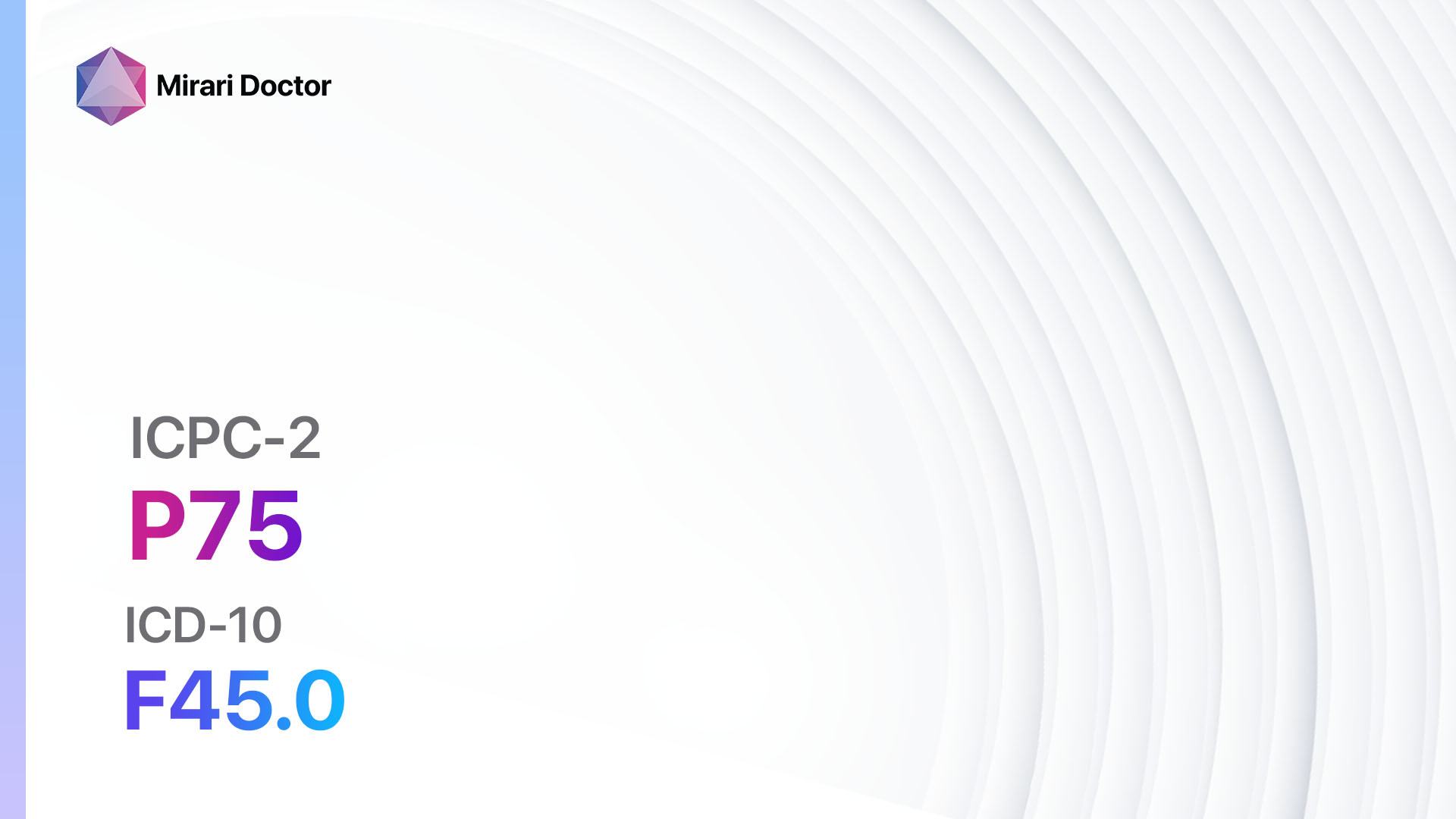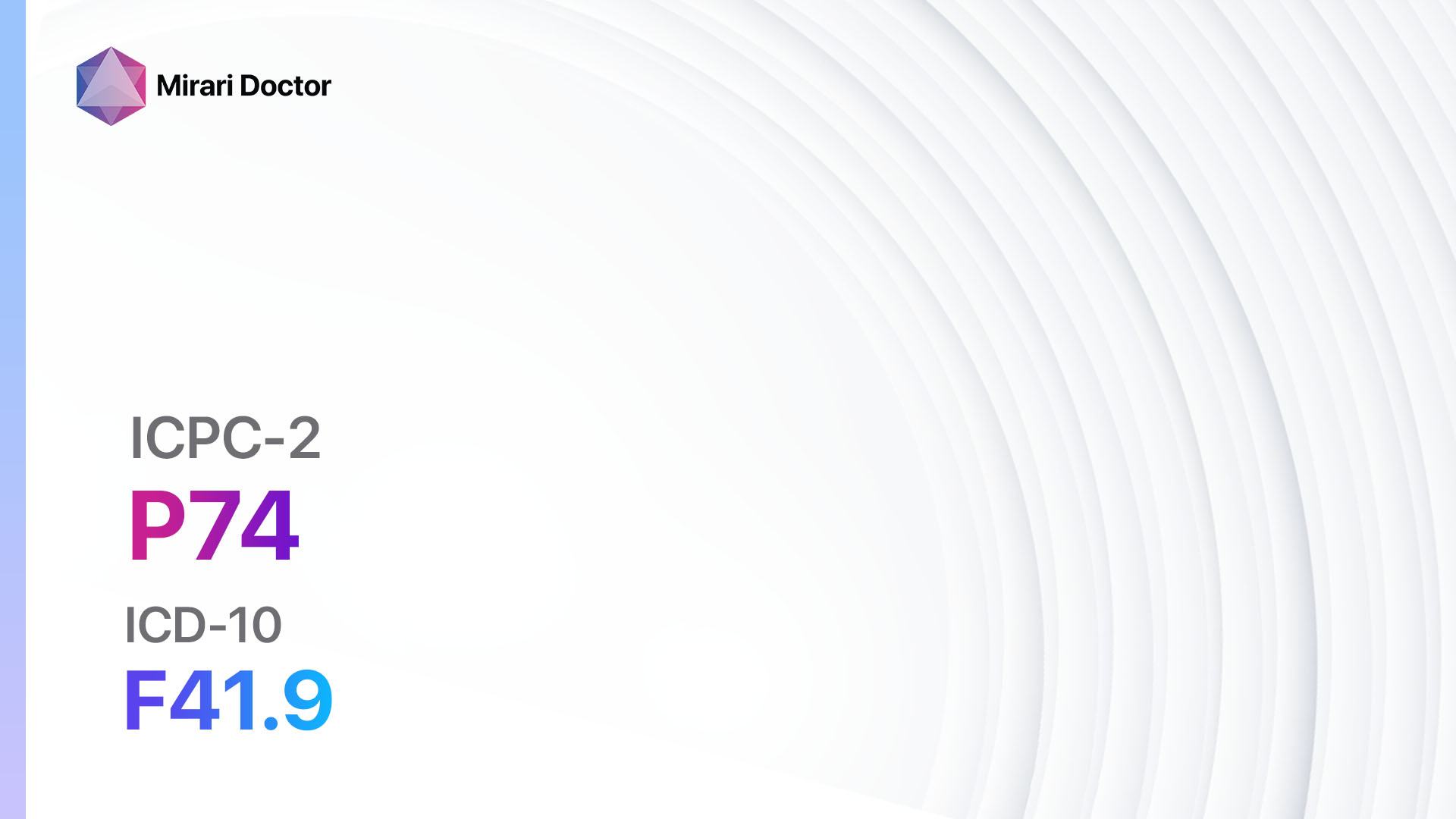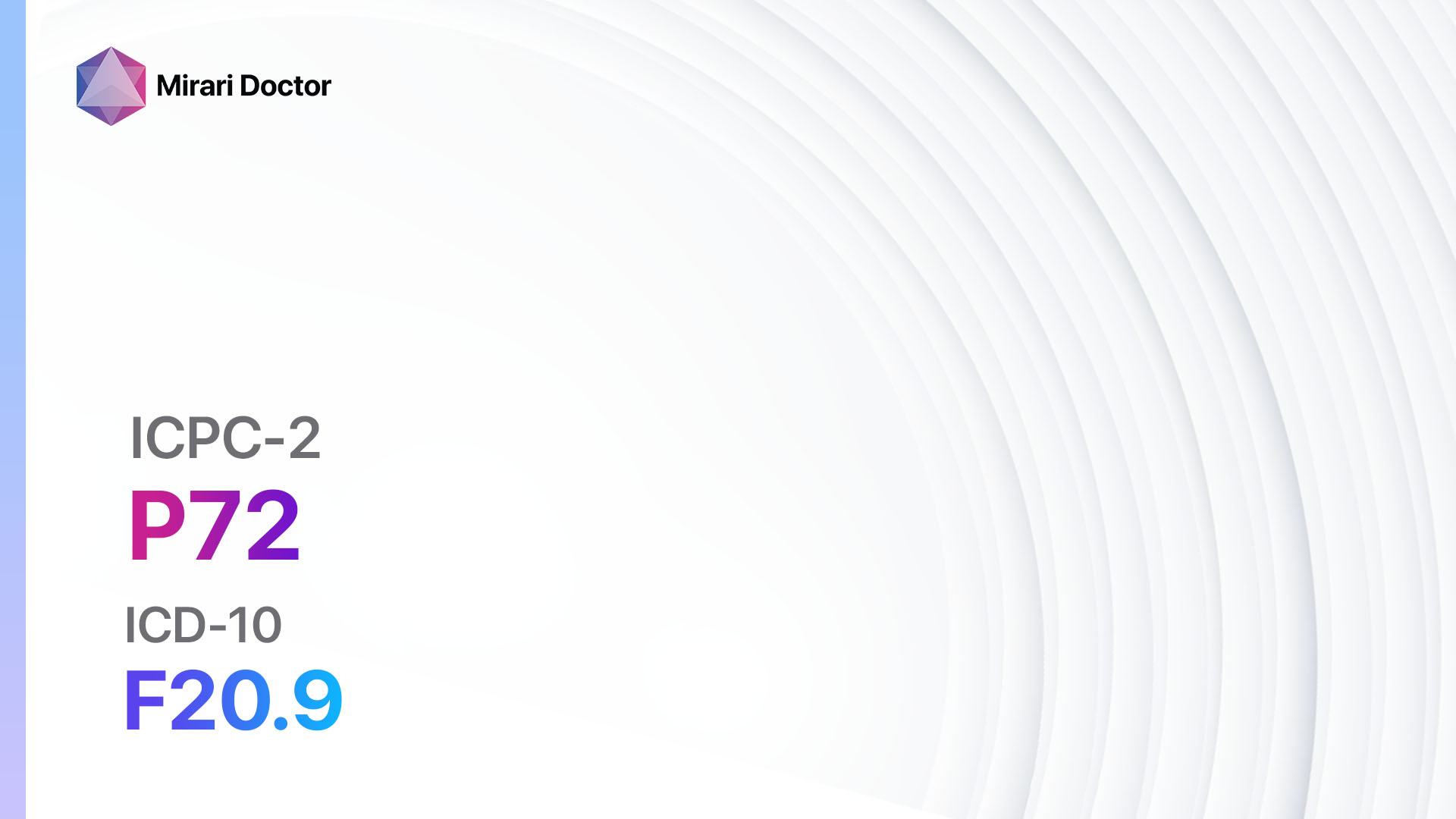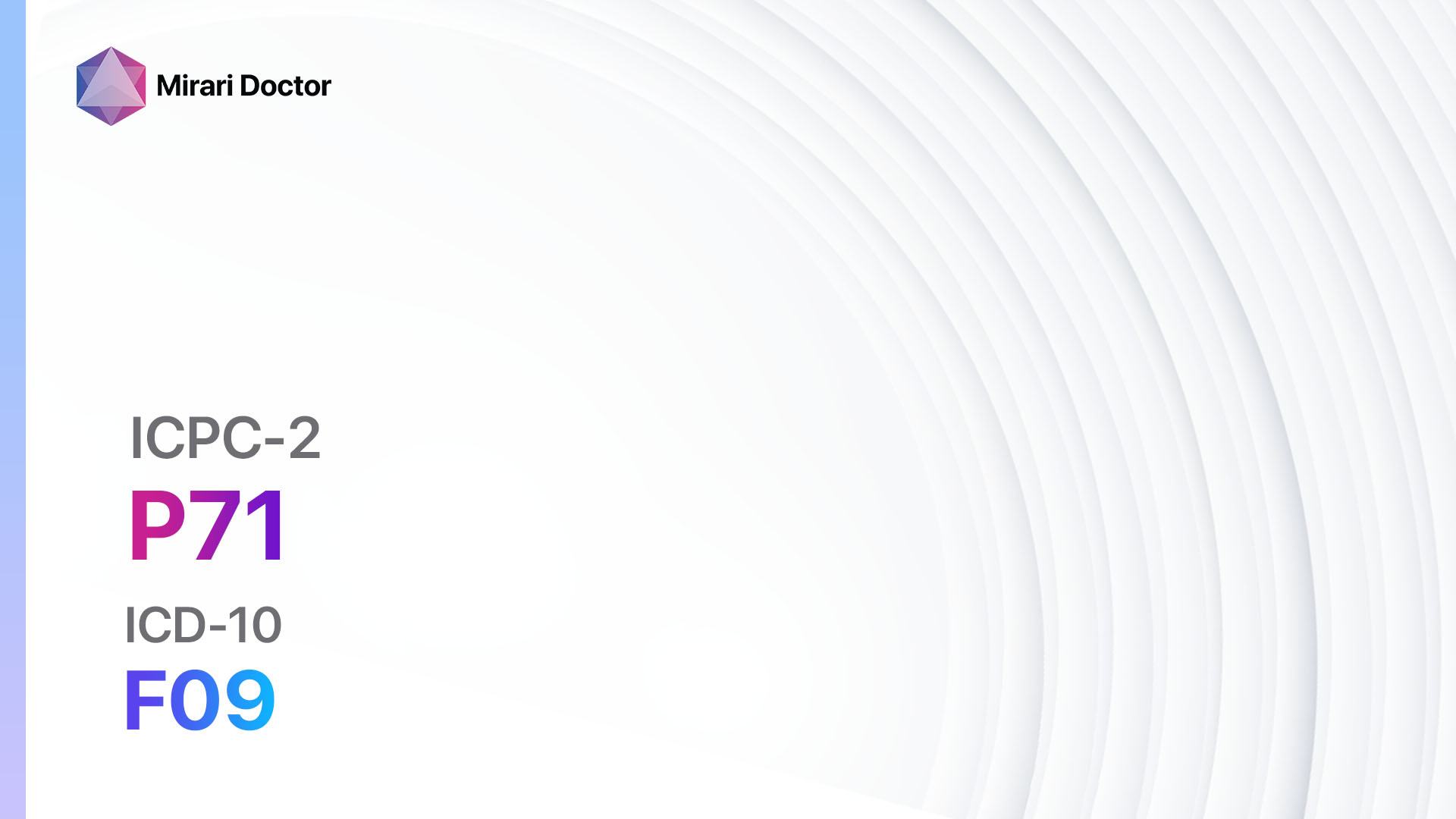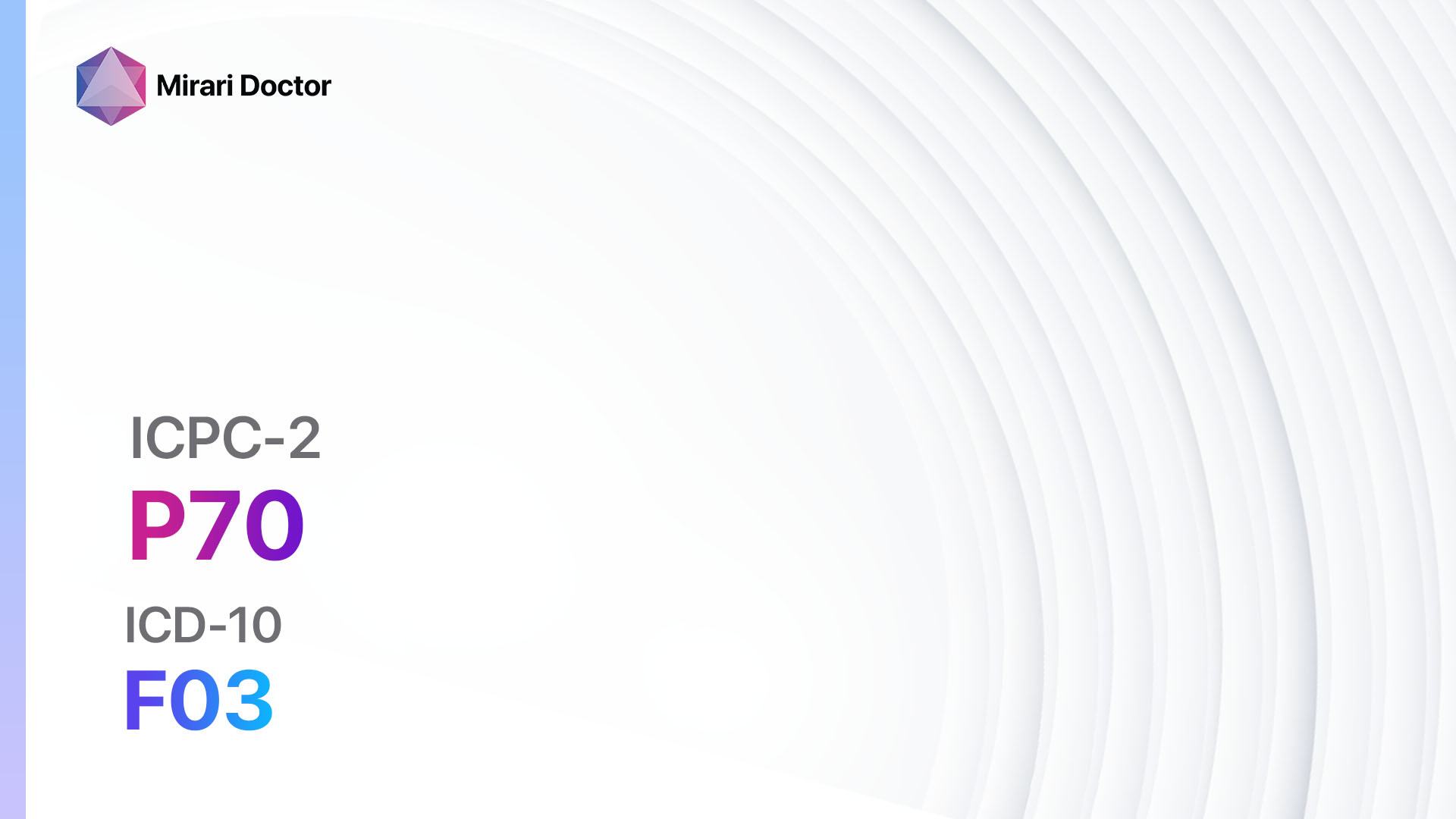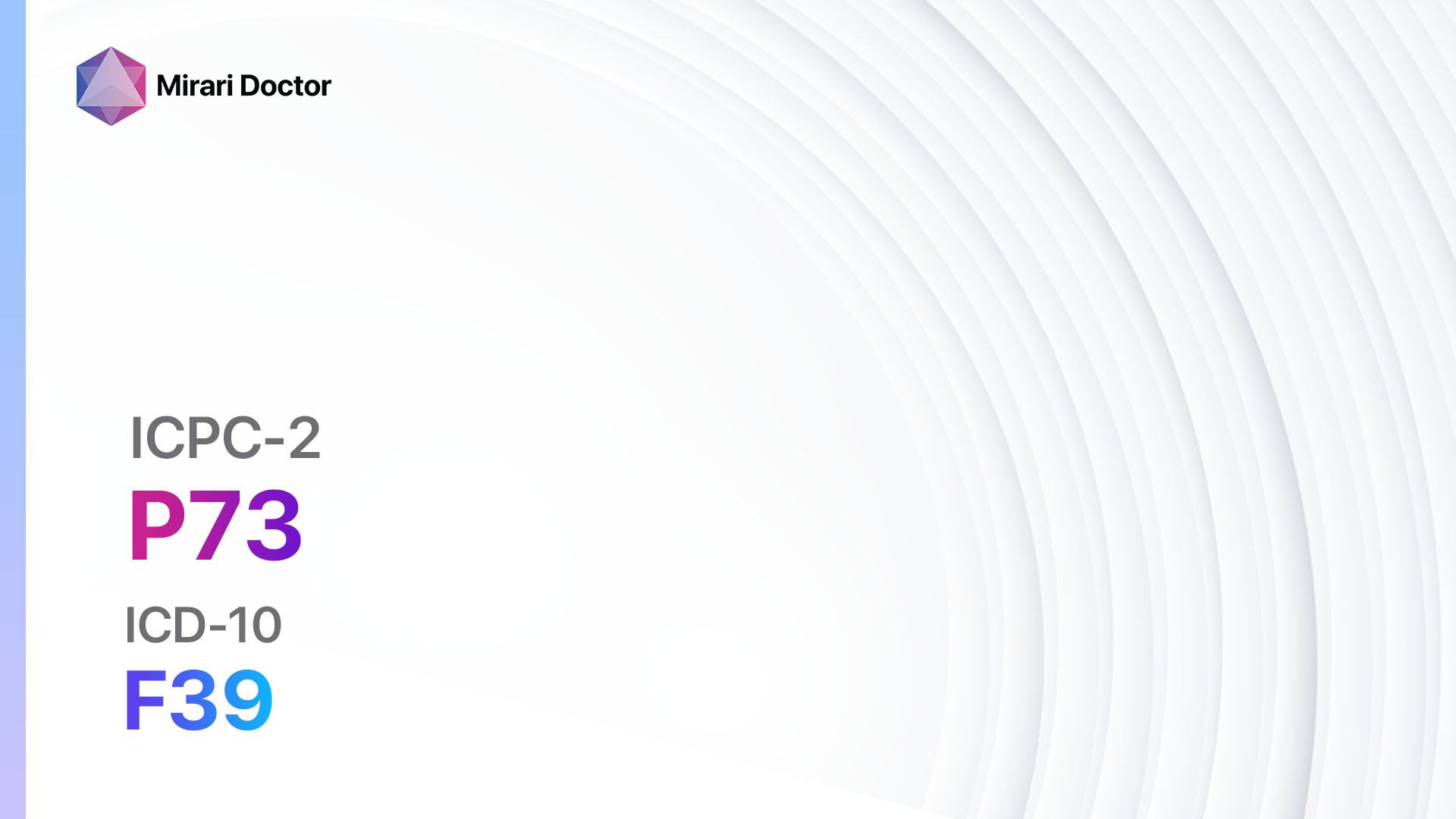
Introduction
Affective psychosis, also known as mood disorder with psychotic features, is a mental health condition characterized by a combination of mood disturbances and psychotic symptoms[1]. It is a significant condition as it can greatly impact a person’s daily functioning and quality of life[2]. The aim of this guide is to provide healthcare professionals with a comprehensive overview of the symptoms, causes, diagnostic steps, possible interventions, and patient education for affective psychosis.
Codes
- ICPC-2 Code: P73 Affective psychosis
- ICD-10 Code: F39 Unspecified mood [affective] disorder
Symptoms
- Depressed mood: Persistent feelings of sadness, hopelessness, or emptiness[3].
- Manic episodes: Periods of elevated mood, increased energy, and impulsive behavior[4].
- Psychotic symptoms: Delusions, hallucinations, or disorganized thinking[5].
Causes
- Genetic factors: A family history of affective disorders increases the risk[6].
- Neurochemical imbalances: Imbalances in neurotransmitters, such as serotonin and dopamine, may contribute to the development of affective psychosis[7].
- Environmental factors: Stressful life events, substance abuse, and certain medications can trigger affective psychosis[8].
Diagnostic Steps
Medical History
- Gather information about the patient’s personal and family medical history, including any history of affective disorders or psychotic symptoms[9].
- Identify any risk factors, such as substance abuse or recent stressful life events.
- Assess the duration, frequency, and severity of mood disturbances and psychotic symptoms.
Physical Examination
- Perform a thorough physical examination to rule out any underlying medical conditions that may be causing or contributing to the symptoms[10].
- Pay attention to any physical signs that may indicate a mood disorder or psychosis, such as changes in sleep patterns or psychomotor agitation.
Laboratory Tests
- Blood tests: Measure levels of certain hormones, such as thyroid-stimulating hormone (TSH), to rule out any hormonal imbalances that may be causing or contributing to the symptoms.
- Drug screening: Test for the presence of drugs or medications that may be causing or exacerbating the symptoms.
- Toxicology screening: Check for the presence of toxins or heavy metals that may be affecting the patient’s mental health.
Diagnostic Imaging
- Magnetic Resonance Imaging (MRI): Use MRI to assess the structure and function of the brain, ruling out any structural abnormalities or brain lesions that may be causing the symptoms.
- Positron Emission Tomography (PET) scan: Measure brain activity and identify any abnormalities in neurotransmitter function that may be contributing to affective psychosis.
Other Tests
- Neuropsychological testing: Assess cognitive function, memory, and attention to determine the extent of cognitive impairment associated with affective psychosis.
- Electroencephalogram (EEG): Measure electrical activity in the brain to identify any abnormal patterns that may be indicative of a seizure disorder or other neurological condition.
Follow-up and Patient Education
- Schedule regular follow-up appointments to monitor the patient’s symptoms, response to treatment, and overall well-being.
- Provide education to the patient and their family about affective psychosis, including the nature of the condition, treatment options, and strategies for managing symptoms and preventing relapse.
Possible Interventions
Traditional Interventions
Medications:
Top 5 drugs for affective psychosis:
- Antipsychotics (e.g., Risperidone, Olanzapine, Quetiapine):
- Cost: Generic versions can range from $10 to $200 per month.
- Contraindications: Hypersensitivity to the medication, severe liver or kidney disease.
- Side effects: Drowsiness, weight gain, extrapyramidal symptoms.
- Severe side effects: Neuroleptic malignant syndrome, tardive dyskinesia.
- Drug interactions: Other medications that affect dopamine levels, such as levodopa.
- Warning: Regular monitoring of blood pressure, blood glucose, and lipid levels is required.
- Mood stabilizers (e.g., Lithium, Valproate, Lamotrigine):
- Cost: Generic versions can range from $10 to $100 per month.
- Contraindications: Severe renal or hepatic impairment, pregnancy.
- Side effects: Nausea, tremor, weight gain.
- Severe side effects: Lithium toxicity, Stevens-Johnson syndrome.
- Drug interactions: Nonsteroidal anti-inflammatory drugs (NSAIDs), diuretics.
- Warning: Regular monitoring of renal function, thyroid function, and serum lithium levels is required.
- Antidepressants (e.g., Selective Serotonin Reuptake Inhibitors (SSRIs), Tricyclic Antidepressants (TCAs)):
- Cost: Generic versions can range from $10 to $50 per month.
- Contraindications: Hypersensitivity to the medication, recent myocardial infarction.
- Side effects: Nausea, sexual dysfunction, insomnia.
- Severe side effects: Serotonin syndrome, cardiac arrhythmias.
- Drug interactions: Monoamine oxidase inhibitors (MAOIs), other serotonergic medications.
- Warning: Close monitoring for suicidal ideation or behavior is required, especially in younger patients.
- Benzodiazepines (e.g., Diazepam, Lorazepam, Clonazepam):
- Cost: Generic versions can range from $5 to $50 per month.
- Contraindications: Severe respiratory insufficiency, narrow-angle glaucoma.
- Side effects: Sedation, dizziness, cognitive impairment.
- Severe side effects: Respiratory depression, paradoxical reactions.
- Drug interactions: Other central nervous system depressants, such as alcohol.
- Warning: Potential for dependence and withdrawal symptoms with long-term use.
- Electroconvulsive therapy (ECT):
- Cost: $2,500 to $5,000 per session.
- Contraindications: Recent myocardial infarction, intracranial mass lesion.
- Side effects: Memory loss, headache, muscle soreness.
- Severe side effects: Cardiovascular complications, dental trauma.
- Drug interactions: Anesthesia medications, muscle relaxants.
- Warning: Requires general anesthesia and close monitoring of vital signs during the procedure.
Alternative Drugs:
- Atypical antipsychotics (e.g., Aripiprazole, Ziprasidone): May be used as an alternative to traditional antipsychotics, with a similar range of costs and side effects.
- Anticonvulsants (e.g., Carbamazepine, Gabapentin): Can be used as mood stabilizers in certain cases, with a similar range of costs and side effects.
- Selective norepinephrine reuptake inhibitors (SNRIs) (e.g., Venlafaxine, Duloxetine): May be used as an alternative to SSRIs, with a similar range of costs and side effects.
- Anxiolytics (e.g., Buspirone, Hydroxyzine): Can be used to manage anxiety symptoms associated with affective psychosis, with a similar range of costs and side effects.
- Transcranial Magnetic Stimulation (TMS): A non-invasive procedure that uses magnetic fields to stimulate nerve cells in the brain, with a cost range of $300 to $500 per session.
Surgical Procedures:
- Deep Brain Stimulation (DBS): Involves implanting electrodes in specific areas of the brain to modulate abnormal neural activity, with a cost range of $50,000 to $100,000.
- Vagus Nerve Stimulation (VNS): Involves implanting a device that delivers electrical impulses to the vagus nerve, with a cost range of $20,000 to $30,000.
Alternative Interventions
- Cognitive Behavioral Therapy (CBT): A form of psychotherapy that focuses on identifying and changing negative thought patterns and behaviors. Cost: $100-$200 per session.
- Mindfulness Meditation: A practice that involves focusing one’s attention on the present moment, with a cost range of $0 (self-guided) to $100 per session.
- Exercise Therapy: Regular physical activity has been shown to improve mood and reduce symptoms of affective psychosis. Cost: Varies depending on the type of exercise and location (e.g., gym membership, personal trainer fees).
- Art Therapy: Engaging in creative activities, such as painting or drawing, can help express emotions and reduce stress. Cost: $50-$100 per session.
- Support Groups: Joining a support group can provide a sense of community and understanding. Cost: Varies (some groups may be free, while others may charge a nominal fee for materials or facilitation).
Lifestyle Interventions
- Healthy Diet: Encourage the patient to consume a balanced diet rich in fruits, vegetables, whole grains, and lean proteins. Cost: Varies depending on food choices and dietary restrictions.
- Adequate Sleep: Emphasize the importance of getting enough sleep and maintaining a regular sleep schedule. Cost: Varies (may involve investing in a comfortable mattress or sleep aids).
- Stress Management: Teach stress reduction techniques, such as deep breathing exercises, yoga, or mindfulness practices. Cost: Varies (some resources may be free, while others may require a fee for classes or workshops).
- Avoidance of Substance Abuse: Educate the patient about the risks of substance abuse and encourage them to seek help if needed. Cost: Varies (may involve the cost of addiction treatment programs or counseling services).
- Social Support: Encourage the patient to maintain a strong support network of family and friends. Cost: Varies (may involve the cost of social activities or outings).
It is important to note that the cost ranges provided are approximate and may vary depending on the location and availability of the interventions.
Mirari Cold Plasma Alternative Intervention
Understanding Mirari Cold Plasma
- Safe and Non-Invasive Treatment: Mirari Cold Plasma is a safe and non-invasive treatment option for various skin conditions. It does not require incisions, minimizing the risk of scarring, bleeding, or tissue damage.
- Efficient Extraction of Foreign Bodies: Mirari Cold Plasma facilitates the removal of foreign bodies from the skin by degrading and dissociating organic matter, allowing easier access and extraction.
- Pain Reduction and Comfort: Mirari Cold Plasma has a local analgesic effect, providing pain relief during the treatment, making it more comfortable for the patient.
- Reduced Risk of Infection: Mirari Cold Plasma has antimicrobial properties, effectively killing bacteria and reducing the risk of infection.
- Accelerated Healing and Minimal Scarring: Mirari Cold Plasma stimulates wound healing and tissue regeneration, reducing healing time and minimizing the formation of scars.
Mirari Cold Plasma Prescription
Video instructions for using Mirari Cold Plasma Device – P73 Affective psychosis (ICD-10:F39)
| Mild | Moderate | Severe |
| Mode setting: 2 (Wound Healing) Location: 7 (Neuro system & ENT) Morning: 15 minutes, Evening: 15 minutes |
Mode setting: 2 (Wound Healing) Location: 7 (Neuro system & ENT) Morning: 30 minutes, Lunch: 30 minutes, Evening: 30 minutes |
Mode setting: 2 (Wound Healing) Location: 7 (Neuro system & ENT) Morning: 30 minutes, Lunch: 30 minutes, Evening: 30 minutes |
| Mode setting: 7 (Immunotherapy) Location: 1 (Sacrum) Morning: 15 minutes, Evening: 15 minutes |
Mode setting: 7 (Immunotherapy) Location: 1 (Sacrum) Morning: 30 minutes, Lunch: 30 minutes, Evening: 30 minutes |
Mode setting: 7 (Immunotherapy) Location: 1 (Sacrum) Morning: 30 minutes, Lunch: 30 minutes, Evening: 30 minutes |
| Total Morning: 30 minutes approx. $5 USD, Evening: 30 minutes approx. $5 USD |
Total Morning: 60 minutes approx. $10 USD, Lunch: 60 minutes approx. $10 USD, Evening: 60 minutes approx. $10 USD, |
Total Morning: 60 minutes approx. $10 USD, Lunch: 60 minutes approx. $10 USD, Evening: 60 minutes approx. $10 USD, |
| Usual treatment for 7-60 days approx. $70 USD – $600 USD | Usual treatment for 6-8 weeks approx. $1,260 USD – $1,680 USD |
Usual treatment for 3-6 months approx. $2,700 USD – $5,400 USD
|
 |
|
Use the Mirari Cold Plasma device to treat Affective psychosis effectively.
WARNING: MIRARI COLD PLASMA IS DESIGNED FOR THE HUMAN BODY WITHOUT ANY ARTIFICIAL OR THIRD PARTY PRODUCTS. USE OF OTHER PRODUCTS IN COMBINATION WITH MIRARI COLD PLASMA MAY CAUSE UNPREDICTABLE EFFECTS, HARM OR INJURY. PLEASE CONSULT A MEDICAL PROFESSIONAL BEFORE COMBINING ANY OTHER PRODUCTS WITH USE OF MIRARI.
Step 1: Cleanse the Skin
- Start by cleaning the affected area of the skin with a gentle cleanser or mild soap and water. Gently pat the area dry with a clean towel.
Step 2: Prepare the Mirari Cold Plasma device
- Ensure that the Mirari Cold Plasma device is fully charged or has fresh batteries as per the manufacturer’s instructions. Make sure the device is clean and in good working condition.
- Switch on the Mirari device using the power button or by following the specific instructions provided with the device.
- Some Mirari devices may have adjustable settings for intensity or treatment duration. Follow the manufacturer’s instructions to select the appropriate settings based on your needs and the recommended guidelines.
Step 3: Apply the Device
- Place the Mirari device in direct contact with the affected area of the skin. Gently glide or hold the device over the skin surface, ensuring even coverage of the area experiencing.
- Slowly move the Mirari device in a circular motion or follow a specific pattern as indicated in the user manual. This helps ensure thorough treatment coverage.
Step 4: Monitor and Assess:
- Keep track of your progress and evaluate the effectiveness of the Mirari device in managing your Affective psychosis. If you have any concerns or notice any adverse reactions, consult with your health care professional.
Note
This guide is for informational purposes only and should not replace the advice of a medical professional. Always consult with your healthcare provider or a qualified medical professional for personal advice, diagnosis, or treatment. Do not solely rely on the information presented here for decisions about your health. Use of this information is at your own risk. The authors of this guide, nor any associated entities or platforms, are not responsible for any potential adverse effects or outcomes based on the content.
Mirari Cold Plasma System Disclaimer
- Purpose: The Mirari Cold Plasma System is a Class 2 medical device designed for use by trained healthcare professionals. It is registered for use in Thailand and Vietnam. It is not intended for use outside of these locations.
- Informational Use: The content and information provided with the device are for educational and informational purposes only. They are not a substitute for professional medical advice or care.
- Variable Outcomes: While the device is approved for specific uses, individual outcomes can differ. We do not assert or guarantee specific medical outcomes.
- Consultation: Prior to utilizing the device or making decisions based on its content, it is essential to consult with a Certified Mirari Tele-Therapist and your medical healthcare provider regarding specific protocols.
- Liability: By using this device, users are acknowledging and accepting all potential risks. Neither the manufacturer nor the distributor will be held accountable for any adverse reactions, injuries, or damages stemming from its use.
- Geographical Availability: This device has received approval for designated purposes by the Thai and Vietnam FDA. As of now, outside of Thailand and Vietnam, the Mirari Cold Plasma System is not available for purchase or use.
References
- Tamminga, C. A., & Medoff, D. R. (2000). The biology of schizophrenia and affective disorder. Current Opinion in Psychiatry, 13(1), 37-43.
- Altamura, A. C., Buoli, M., & Serati, M. (2011). Duration of illness and duration of untreated illness in relation to drug response in psychiatric disorders. Neuropsychiatry, 1(1), 81-90.
- American Psychiatric Association. (2013). Diagnostic and statistical manual of mental disorders (DSM-5®). American Psychiatric Pub.
- Vieta, E., & Valentí, M. (2013). Mixed states in DSM-5: implications for clinical care, education, and research. Journal of affective disorders, 148(1), 28-36.
- Arciniegas, D. B. (2015). Psychosis. Continuum: Lifelong Learning in Neurology, 21(3), 715.
- Craddock, N., & Sklar, P. (2013). Genetics of bipolar disorder. The Lancet, 381(9878), 1654-1662.
- Berk, M., Dodd, S., Kauer‐Sant’Anna, M., Malhi, G. S., Bourin, M., Kapczinski, F., & Norman, T. (2007). Dopamine dysregulation syndrome: implications for a dopamine hypothesis of bipolar disorder. Acta Psychiatrica Scandinavica, 116, 41-49.
- Garno, J. L., Goldberg, J. F., Ramirez, P. M., & Ritzler, B. A. (2005). Impact of childhood abuse on the clinical course of bipolar disorder. The British Journal of Psychiatry, 186(2), 121-125.
- Vieta, E., Berk, M., Wang, W., Colom, F., Tohen, M., & Baldessarini, R. J. (2009). Predominant previous polarity as an outcome predictor in a controlled treatment trial for depression in bipolar I disorder patients. Journal of affective disorders, 119(1-3), 22-27.
- Frye, M. A., Salloum, I. M., & Moe, M. (2008). Comorbid anxiety and substance use disorders associated with a lower use of mood stabilisers in patients with rapid cycling bipolar disorder: a descriptive analysis of the cross-sectional data of 566 patients. International journal of clinical practice, 62(9), 1358-1362.
Related articles
Made in USA


